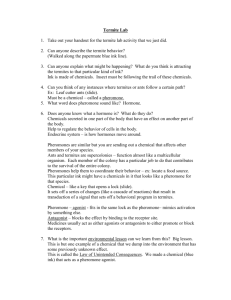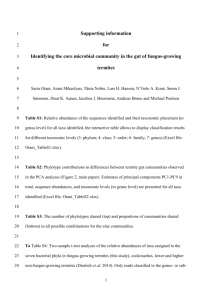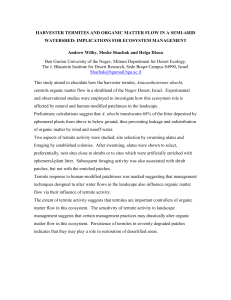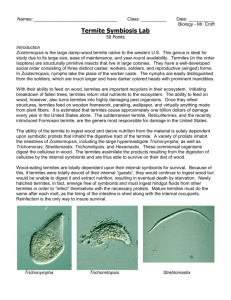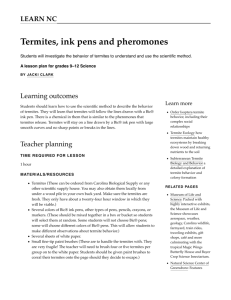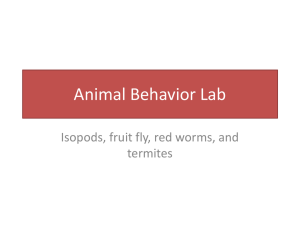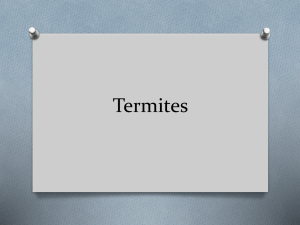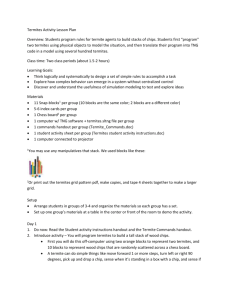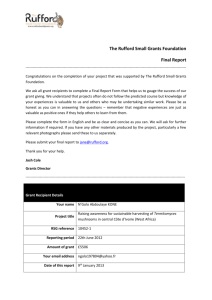National Geographic
advertisement
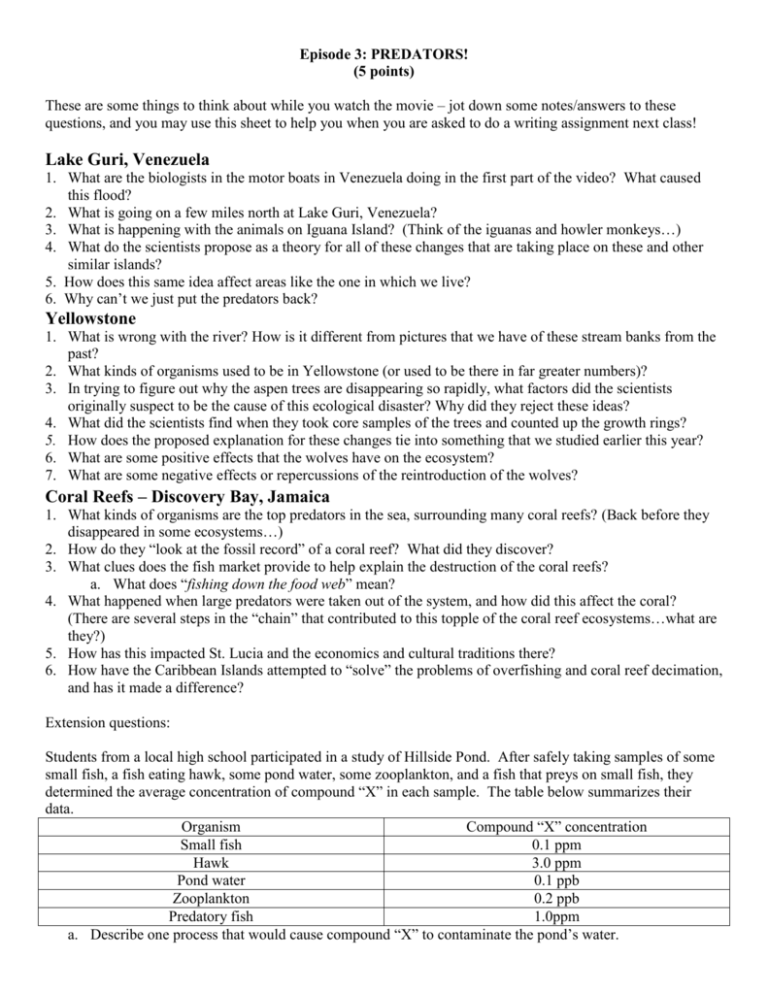
Episode 3: PREDATORS! (5 points) These are some things to think about while you watch the movie – jot down some notes/answers to these questions, and you may use this sheet to help you when you are asked to do a writing assignment next class! Lake Guri, Venezuela 1. What are the biologists in the motor boats in Venezuela doing in the first part of the video? What caused this flood? 2. What is going on a few miles north at Lake Guri, Venezuela? 3. What is happening with the animals on Iguana Island? (Think of the iguanas and howler monkeys…) 4. What do the scientists propose as a theory for all of these changes that are taking place on these and other similar islands? 5. How does this same idea affect areas like the one in which we live? 6. Why can’t we just put the predators back? Yellowstone 1. What is wrong with the river? How is it different from pictures that we have of these stream banks from the past? 2. What kinds of organisms used to be in Yellowstone (or used to be there in far greater numbers)? 3. In trying to figure out why the aspen trees are disappearing so rapidly, what factors did the scientists originally suspect to be the cause of this ecological disaster? Why did they reject these ideas? 4. What did the scientists find when they took core samples of the trees and counted up the growth rings? 5. How does the proposed explanation for these changes tie into something that we studied earlier this year? 6. What are some positive effects that the wolves have on the ecosystem? 7. What are some negative effects or repercussions of the reintroduction of the wolves? Coral Reefs – Discovery Bay, Jamaica 1. What kinds of organisms are the top predators in the sea, surrounding many coral reefs? (Back before they disappeared in some ecosystems…) 2. How do they “look at the fossil record” of a coral reef? What did they discover? 3. What clues does the fish market provide to help explain the destruction of the coral reefs? a. What does “fishing down the food web” mean? 4. What happened when large predators were taken out of the system, and how did this affect the coral? (There are several steps in the “chain” that contributed to this topple of the coral reef ecosystems…what are they?) 5. How has this impacted St. Lucia and the economics and cultural traditions there? 6. How have the Caribbean Islands attempted to “solve” the problems of overfishing and coral reef decimation, and has it made a difference? Extension questions: Students from a local high school participated in a study of Hillside Pond. After safely taking samples of some small fish, a fish eating hawk, some pond water, some zooplankton, and a fish that preys on small fish, they determined the average concentration of compound “X” in each sample. The table below summarizes their data. Organism Compound “X” concentration Small fish 0.1 ppm Hawk 3.0 ppm Pond water 0.1 ppb Zooplankton 0.2 ppb Predatory fish 1.0ppm a. Describe one process that would cause compound “X” to contaminate the pond’s water. b. Draw a food chain that illustrates the correct trophic order in the pond. Include the concentrations of compound “X” for each part of the chain. c. Describe a process that would explain the different concentrations of compound “X” in each organism. d. Describe one real life example of a substance that behaves like compound “X” in the oceans. Give one negative effect that the substance might have on humans. Termites are social insects that are essential decomposers in tropical rain forest ecosystems. Termites may account for up to 95 percent of insect biomass in tropical rain forests. Termites consume vast amounts of dead and decomposing plant material, thanks to the work of mutualistic cellulose-digesting microorganisms that inhabit their guts. In addition to their roles as important decomposers, termites digest plant material and directly contribute carbon dioxide and methane emissions into the atmosphere. It is likely that, like many insect species, termites and their symbionts may be sensitive to changes in their microclimate caused by global climate change, especially with regard to temperature and humidity. Relative Humidity 50% 70% 90% 20 degrees C 0.04 0.05 0.05 25 degrees C 0.05 0.07 0.10 30 degrees C 0.12 0.13 0.27 35 degrees C 0.09 0.13 0.15 40 degrees C 0.00 0.00 0.00 a. Respond to the following using the data in the table above, which gives the rate of wood consumption by termites, in mg per day per termite, under various temperature and relative humidity conditions. Under optimal conditions, the emission rate of methane by termites is approximately 70 kilograms of CH4 per year per 1,000 termites. (i) According to the data, what are the optimal temperature and relative humidity for termite activity? (ii) Given a density of 4.5 x 107 termites per hectare and optimal conditions, calculate the annual amount of methane emitted, in kilograms, by the termites inhabiting a 2,000 hectare tropical rain forest. (iii) Suppose the temperature increases to 35 degrees C and the relative humidity decreases to 50 %. Using the data provided, determine the amount of methane, in kilograms, that would be emitted by the termites in the 2,000 hectare tropical rain forest. (iv) Explain why the population size of termites is also affected by temperature and humidity. b. It has been observed that soon after a tropical rain forest is cleared, termite density increases to an estimated 6.8 x 107 termites per hectare. Thereafter, the termite population size decreases dramatically. (i) What is the most likely reason that the density of the termites increases when a tropical rain forest is cleared? (ii) Why do the termite populations eventually decrease dramatically? c. Describe one way, other than changes in termite activity, that tropical rain forest destruction contributes to anthropogenic climate change.

